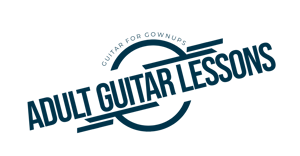When playing guitar it’s not uncommon to strum a series of chords in succession, one right after another, according to the song you are playing.
And while it’s important, especially as a beginning guitarist, to get comfortable with changing from one chord to the next smoothly and fluidly, it’s also important to learn that there are things you can do with a single chord while remaining in one position.
The technique of staying in a single chord position, and “moving around” in that position, is know by many as a “movement,” and is something that will add some impressive new layers to your playing style.
Although you will find single chord “movements” that you can perform at various locations on the fret board, some of the easiest and most effective can be played in the open “CAGED” chords (C-A-G-E-D)
Today we will look at a simple “movement” you can do with an open “A” chord. If you’ve been a student or subscriber of ours for any length of time, you probably already know that I am a huge fan of playing an open A chord using the “single finger” method – and this discussion is a perfect example of why.
When playing the open “A” chord on guitar using the “one finger” method, you would use the 1st finger and “barre” the 3 notes (on the 2nd, 3rd and 4th strings) that comprise the “A” chord on the 2nd fret. This can be a little tricky to get the hang of, but when you do, you’ll never go back to playing an A chord with multiple fingers!
The “movement” we will look at today involves strumming an A chord, then picking some bass notes, all while keep the A chord position. The chord itself would be played with the 1st finger, as described above, and the “movement” notes are played with the 2nd finger.
Here’s how it looks:
———————————————————————-
——-2——————————————————2——-
——-2——————————————————2——-
——-2——————————————————2——-
——-0——————————–0—-3(bend up)——-0——-
————–0—0—-3(bend up)————————————-
In the above example you would:
1. First strum an open A chord just to get your ears used to the sound, then play the open 6th string (E) twice
2. Next, using the 2nd finger on the 3rd fret of the 6th string, play a slight (1/4) bend.
3. Next, “resolve” that bend to the open A note on the 5th string.
4. Next, play a slight (1/4) bend on the 3rd fret of the 2nd string (C) similar to the way you played the bend earlier on the 3rd fret of the 6th string.
5. And finally, release that note bend and let it resolve on the open 5th string (A) and continue on with strumming the full “A” chord.
This is a fairly easy movement but try not the beat yourself up trying to get it exactly as the about TAB is written. That’s not the point.
The goal of this lesson is to simply make you aware of the many possibilities available to you when playing an open chord and staying in one position.
So play around with this, experiment a little, and come up with some open chord movements that are uniquely your own!



